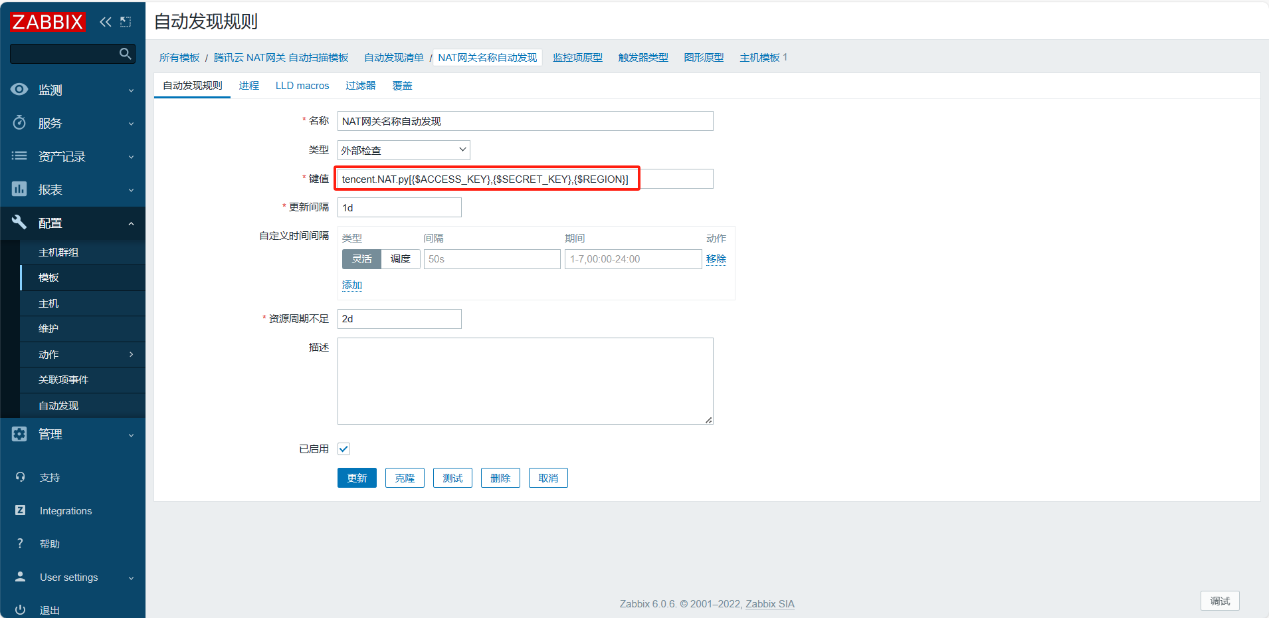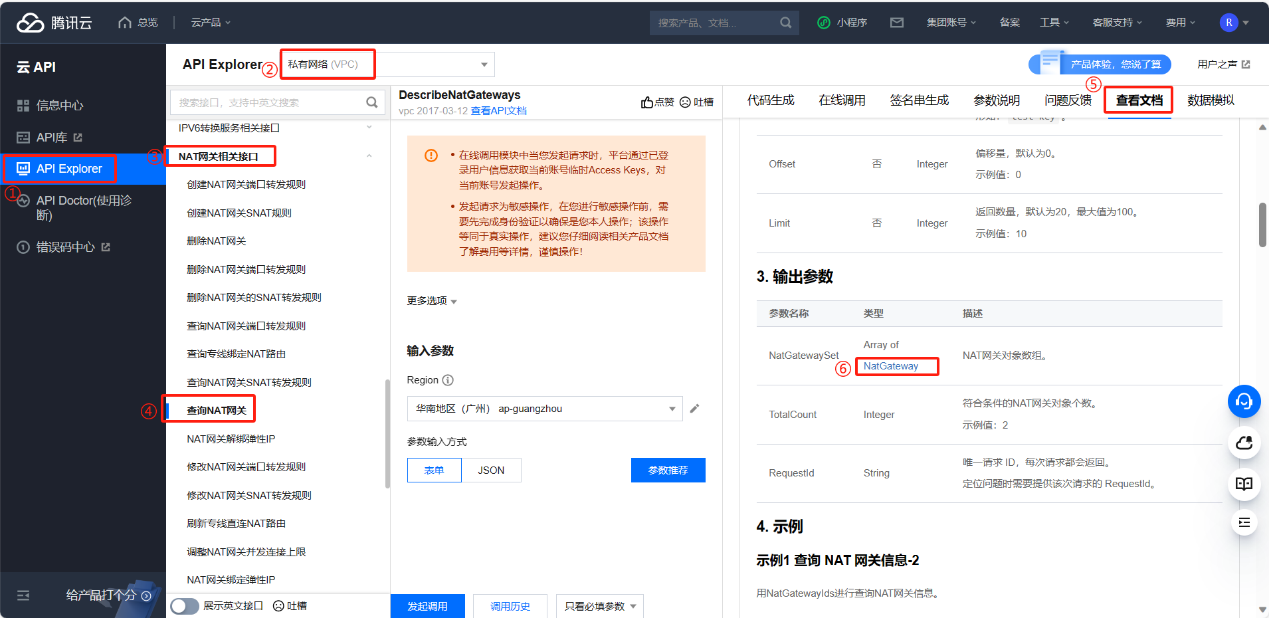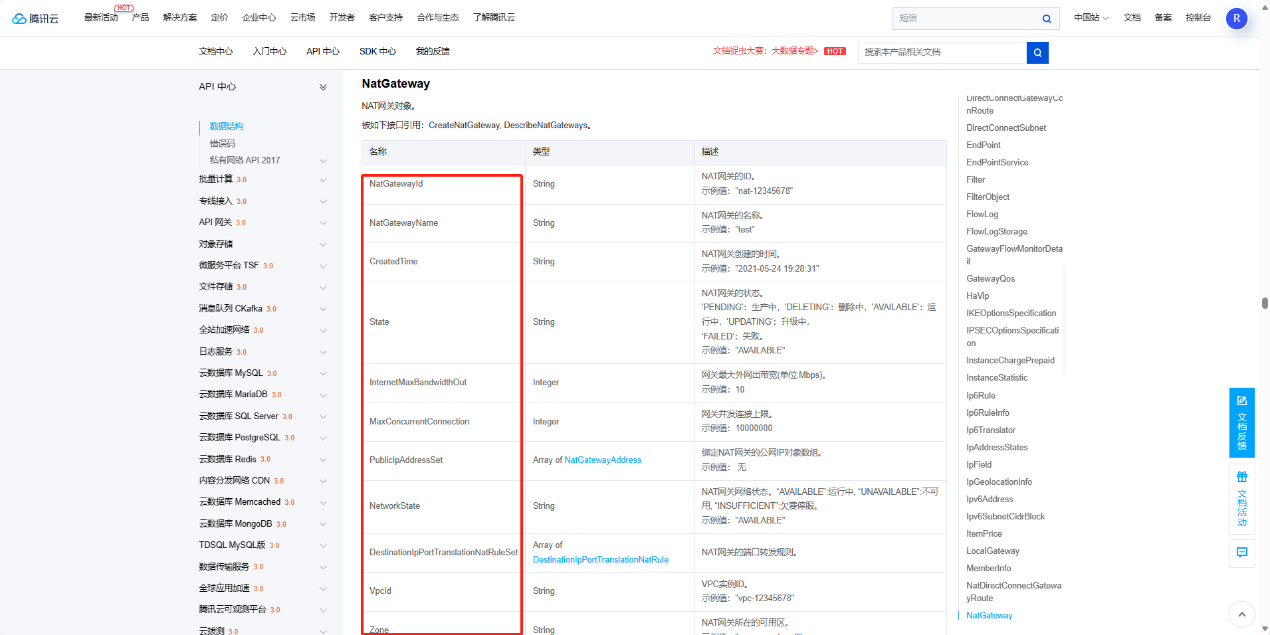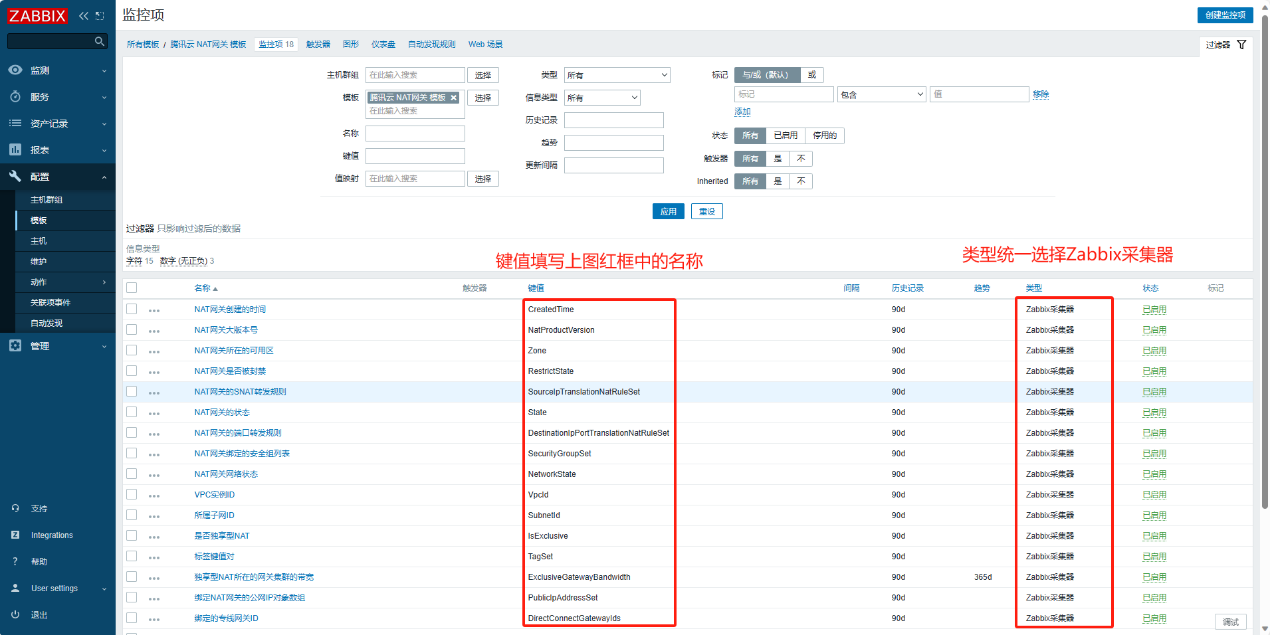



NAT 网关(NAT Gateway)是一种支持 IP 地址转换服务,提供网络地址转换能力,主要包括SNAT(Source Network Address Translation,源网络地址转换)和DNAT(Destination Network Address Translation,目的网络地址转换)能力,可为私有网络(VPC)内的资源提供安全、高性能的 Internet 访问服务。
NAT 网关分为公网 NAT 网关和私网 NAT 网关。公网 NAT 网关提供公网地址转换服务,而私网 NAT 网关提供私网地址转换服务。
NAT 网关支持高达99.99%的高可用性、5Gbps的带宽以及1000 万以上的并发连接数,其典型应用场景如下:
1. 大带宽、高可用的公网出口服务,例如:网络爬虫,访问 Internet 公共服务等。
2. 安全的公网出口服务,例如:云服务器需要与公网通信,但出于安全性考虑,不希望云服务器绑定公网 IP。
本次监控方式通过Zabbix外部检查方式自动发现实例,监控项数据通过Zabbix采集器方式生成。将下面脚本上传至外部检查路径下。
注:部署路径有差异,根据实际环境的外部检查路径放至脚本。
#!/usr/bin/python3
import json
from tencentcloud.common import credential
from tencentcloud.common.profile.client_profile import ClientProfile
from tencentcloud.common.profile.http_profile import HttpProfile
from tencentcloud.common.exception.tencent_cloud_sdk_exception import TencentCloudSDKException
from tencentcloud.vpc.v20170312 import vpc_client, models
import sys
from os import popen
from zbxsend import ZabbixMetric, ZabbixSender
akey = sys.argv[1]
ckey = sys.argv[2]
region = sys.argv[3]
ZABBIX_SEND_ADDR = '/itops/zabbix/bin/zabbix_sender'
ZABBIX_SERVER_IP = '127.0.0.1'
ZABBIX_PORT = '10051'
def get_data(offset):
params = {
"Limit": 100,
"Offset": offset
}
req.from_json_string(json.dumps(params))
# 返回的resp是一个DescribeNatGatewaysResponse的实例,与请求对象对应
resp = client.DescribeNatGateways(req)
# 输出json格式的字符串回包
res = resp.to_json_string()
data = json.loads(res)
disklist = data['NatGatewaySet']
# 获取记录总条目数
totalcount = int(data['TotalCount'])
return totalcount,disklist
try:
# 实例化一个认证对象,入参需要传入腾讯云账户 SecretId 和 SecretKey
# 密钥可前往官网控制台 https://console.cloud.tencent.com/cam/capi 进行获取
cred = credential.Credential(akey,ckey)
# 实例化一个http选项,可选的,没有特殊需求可以跳过
httpProfile = HttpProfile()
httpProfile.endpoint = "vpc.tencentcloudapi.com"
# 实例化一个client选项,可选的,没有特殊需求可以跳过
clientProfile = ClientProfile()
clientProfile.httpProfile = httpProfile
# 实例化要请求产品的client对象,clientProfile是可选的
client = vpc_client.VpcClient(cred, region, clientProfile)
# 实例化一个请求对象,每个接口都会对应一个request对象
req = models.DescribeNatGatewaysRequest()
totalcount,disklist = get_data(0) ## 获取100条以内的disk数据
if totalcount > 100: ## 如果disk记录大于100,则将100往后的数据拼接至list
if totalcount % 100 > 0:
num = totalcount // 100 + 1
else:
num = totalcount // 100
for i in range(num):
if i == 0:
continue
else:
disklist = disklist +
get_data(i*100)[1]
list_disk = []
for i in disklist:
nat_id = i['NatGatewayId']
nat_name = i['NatGatewayName']
nat_name = nat_name+nat_id
list_disk.append({"{#NATID}":nat_id,"{#NATNAME}":nat_name})
keys_list = list(i.keys())
for key in keys_list:
result =
ZabbixSender(ZABBIX_SERVER_IP).send([ZabbixMetric(nat_id,key,str(i[key]))])
print(json.dumps(list_disk))
except TencentCloudSDKException as
err:
print(err)
注意以下三处的值根据实际环境调整
ZABBIX_SEND_ADDR:zabbix_sender路径
ZABBIX_SERVER_IP:server服务器IP地址
ZABBIX_PORT:server服务器端口


键值解释:
tencent.NAT.py:脚本名称,可自定义脚本名称,需要与外部检查路径下的脚本名称一致
{$ACCESS_KEY}: SecretId
{$SECRET_KEY}:SecretKey
可前往官网控制台 https://console.cloud.tencent.com/cam/capi 获取SecretId和SecretKey
{$REGION}:资源地域,表示操作的资源所属的地域
监控项名称入口:



设置完成后,等待实例自动发现即可。
以上就是本期的Zabbix技术分享。
大家好,我是乐乐,专注运维技术研究与分享,关注我学习更多Zabbix等使用技巧,更多运维问题还可以到乐维社区留言提问。乐维社区是运维监控领域的垂直社区,专注打造Zabbix等技术栈的线上交流与共享平台,每周三下午,社区关联答疑群(如下图)还提供免费专家在线答疑,欢迎小伙伴们加入。

错误信息